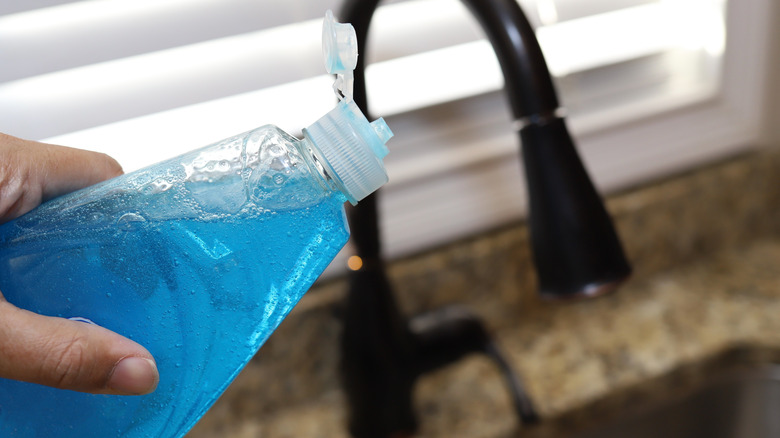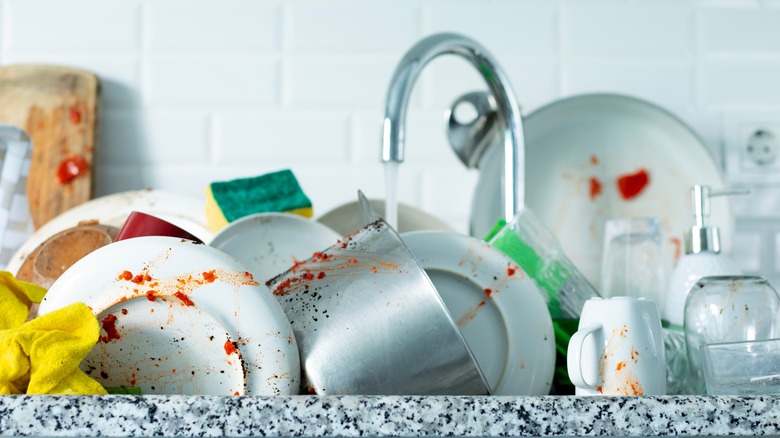Why You Should Put A Dash Of Dish Soap Into Your Sink's Drain Before Dishwashing
Dish soap is a true household staple. Aside from its obvious usage in cleaning and disinfecting your dishes, dish soap can also prove beneficial in a number of other different ways. It can be useful when cleaning your bathroom, when tidying up your backyard and patio areas, and so much more. Ultimately, dish soap has got you covered whenever you find yourself in a yucky, sticky, or greasy situation.
Now, what is the yuckiest, stickiest, and greasiest part of any home? Most homeowners would agree that it is the kitchen sink. Whether it is piled up with last night's spaghetti bowls, red wine glasses from girl's night, or anything in between, it is safe to say that kitchen sinks go through a lot. When they get messy, many homeowners opt to simply wash their mess down the drain. However, doing so can often lead to dirt, grease, and grime build-up within your sink's drain and potentially harm your pipes if left unchecked for too long. Want to avoid this problem? Well, that's where dish soap comes in.
Dish soap down the drain hack
Looking to keep your kitchen sink clean and your drain clear? Do you want to avoid a visit from the plumber and save money, too? Well then look no further than your handy, dandy dish soap.
When washing dishes, you will almost inevitably wash grease and oils from your meals down the drain too, which are the biggest culprits in clogging drains. This is because oil and grease are insoluble, or in other words, they do not break down in water. So when they are simply washed down the drain, rather than breaking down, these substances will just stick to your pipes instead. However, dish soap is formulated to cut through grease and oil. Dish soaps are filled with non-polar molecules that bind to the molecules within grease and oil, breaking them down and effectively neutralizing their ability to stick to pipes and clog your drain.
So, before washing your dishes, simply squirt a generous dash of dish soap down the drain. Upon doing so, turn on the hot water and let it run down the drain for about 15 seconds. This will ensure that any potential grease or grime is neutralized, allowing everything to slip down your drain with ease. Repeat this often for regular maintenance.

